5 Common Myths About MSK Health: Let’s Set the Record Straight
When it comes to musculoskeletal (MSK) health, misinformation can lead to confusion, fear, and even mismanagement of conditions. With so many myths circulating about joint pain, back issues, and overall musculoskeletal wellness, it’s time to separate fact from fiction. In this listicle, “5 Common Myths About MSK Health: Let’s Set the Record Straight,” we’ll debunk prevalent misconceptions that may be affecting your understanding of your own body. From the belief that all pain is a sign of serious injury to the notion that exercise should be avoided at all costs, we’ll explore the truths behind these myths and provide you with valuable insights. By the end, you’ll be equipped with a clearer perspective on MSK health, empowering you to make informed decisions for your well-being. Let’s dive in and uncover the realities of musculoskeletal health!
1) Myth: Only athletes need to worry about musculoskeletal health
It’s a common misconception that only athletes need to pay attention to their musculoskeletal health. In reality, everyone is susceptible to musculoskeletal issues, nonetheless of their activity level. Daily activities, such as sitting at a desk for long hours, lifting groceries, or even sleeping in an awkward position, can lead to discomfort and long-term damage. Ignoring the signs of strain or pain can result in chronic conditions that affect daily life, making it essential for all individuals to prioritize their musculoskeletal well-being.
Consider the following groups that can substantially benefit from focusing on their musculoskeletal health:
- Office Workers: Prolonged sitting can lead to poor posture and back pain.
- parents: Lifting and carrying children can strain muscles and joints.
- Seniors: Age-related changes in bones and joints require proactive care.
- Students: Heavy backpacks and long hours of study can cause neck and shoulder issues.
By understanding that musculoskeletal health is a universal concern, individuals can take proactive steps to maintain their physical well-being. Regular exercise, ergonomic adjustments, and mindful movement can definitely help prevent injuries and enhance overall quality of life.
Reality: Musculoskeletal health is important for everyone, regardless of activity level. Everyday tasks like walking,sitting,and lifting can strain muscles and joints,making it essential for all individuals to maintain good MSK health
Musculoskeletal (MSK) health is often misconceived as a concern only for athletes or those engaged in rigorous physical activities. However, the reality is that everyone, regardless of their activity level, is susceptible to musculoskeletal issues. Everyday actions, such as walking, sitting, and lifting, can place significant strain on our muscles and joints. Poor posture while sitting at a desk or improper lifting techniques when carrying groceries can lead to discomfort and long-term health problems. Therefore, it’s crucial for individuals from all walks of life to prioritize their MSK health through awareness and preventive measures.
Maintaining good musculoskeletal health can enhance overall well-being and improve daily functioning. Simple practices can make a considerable difference in how our bodies respond to everyday tasks. Consider incorporating the following into your daily routine:
- Regular stretching: Helps maintain adaptability and reduce tension.
- Strength training: Builds muscle support around joints, reducing the risk of injury.
- proper ergonomics: Adjust workspaces to promote good posture and minimize strain.
- Mindful lifting techniques: Bend at the knees and keep the load close to your body.
By acknowledging that musculoskeletal health is vital for everyone, we can foster a culture of well-being that encourages proactive measures. here’s a swift reference table to highlight the benefits of maintaining MSK health:
| benefit | Description |
|---|---|
| enhanced Mobility | improved range of motion in daily activities. |
| Pain Reduction | Less discomfort during routine tasks. |
| Injury Prevention | Lower risk of strains and sprains. |
| Increased Strength | Better support for joints and muscles. |
2) Myth: Pain is a normal part of aging
Many people believe that experiencing pain as they age is simply a part of the natural process. However,this myth can lead to needless suffering and a decreased quality of life. In reality,while some changes in the musculoskeletal system are common as we age,pain is not an inevitable consequence. Factors such as lifestyle choices, previous injuries, and underlying health conditions play a significant role in the level of discomfort one may experience. Instead of accepting pain as a normal aspect of aging, it’s essential to seek proper diagnosis and treatment to address any underlying issues.
understanding the true nature of pain can empower individuals to take control of their health.A proactive approach, including regular exercise, healthy nutrition, and stress management, can greatly reduce the likelihood of experiencing chronic pain. Here’s a quick overview of factors that contribute to pain in older adults:
| Factor | description |
|---|---|
| Inactivity | Reduced movement can lead to stiffness and weakness. |
| Obesity | Extra weight puts added stress on joints. |
| Chronic Conditions | Diseases like arthritis can cause persistent pain. |
| Poor Posture | Misalignment can lead to muscle strain and discomfort. |
By recognizing that pain is not a given with age, individuals can challenge this myth and pursue a more active and fulfilling life. Consulting with healthcare professionals can provide valuable insights and tailored strategies to manage and prevent pain effectively.
Reality: While it’s common to experience some changes as we age, persistent pain is not a normal part of the aging process. It often indicates underlying issues that can be addressed with proper care and lifestyle adjustments
Many people assume that experiencing persistent pain is just a natural part of getting older.However, this misconception can lead to unnecessary suffering and a reluctance to seek help. in reality, while it’s true that our bodies undergo changes as we age—such as decreased muscle mass and joint stiffness—chronic pain is often a sign of underlying conditions that deserve attention. Ignoring these signs can result in further complications, making it crucial to understand that pain should not be accepted as a normal aspect of aging.
Addressing persistent pain effectively involves a combination of proper care and lifestyle adjustments. Here are some key strategies that can help:
- Consult a healthcare professional: A thorough evaluation can identify the root causes of pain.
- Engage in regular physical activity: Tailored exercises can enhance mobility and strength.
- Maintain a balanced diet: Proper nutrition supports overall musculoskeletal health.
- Incorporate stress management techniques: Practices like yoga or meditation can alleviate tension and improve pain perception.
| Common Causes of Persistent Pain | potential Solutions |
|---|---|
| Arthritis | Physical therapy, anti-inflammatory medications |
| Osteoporosis | Calcium and vitamin D supplementation, weight-bearing exercises |
| Muscle Strains | Rest, ice application, stretching exercises |
| Nerve Damage | Medication management, nerve blocks, lifestyle changes |
3) Myth: Stretching before exercise is enough to prevent injuries
Many people believe that stretching before a workout is the magic bullet for preventing injuries, but this is a misconception that can lead to more harm than good. While flexibility is critically important for overall musculoskeletal health, simply stretching does not adequately prepare your body for the demands of physical activity. Rather, a extensive warm-up routine that incorporates dynamic movements is crucial.Consider including exercises that mimic the activities you’ll be performing, such as:
- Leg swings for lower body mobility
- Arm circles to loosen up the shoulders
- High knees to elevate heart rate
additionally, the type of exercise you engage in plays a significant role in injury prevention. Static stretching,which involves holding a stretch for an extended period,can actually decrease muscle strength and power when performed before intense activities. Rather, focus on a warm-up that combines both mobility and activation exercises. Here’s a simple comparison of effective warm-up strategies:
| Warm-Up Type | Benefits |
|---|---|
| Dynamic Stretching | Increases blood flow, improves range of motion |
| Static Stretching | Can reduce strength, not ideal pre-exercise |
Reality: While stretching is beneficial, it should be part of a comprehensive warm-up routine that includes dynamic movements to prepare the body for activity. A well-rounded approach can significantly reduce the risk of injuries
Many people believe that static stretching alone is sufficient to prepare their bodies for physical activity. Tho, while stretching has its benefits, it should not be the sole focus of a warm-up routine. A comprehensive approach that incorporates dynamic movements can enhance muscle elasticity, improve joint mobility, and elevate heart rate, all of which are essential for optimal performance. consider integrating the following dynamic exercises into your warm-up:
- Leg Swings: Improve hip mobility and activate leg muscles.
- Arm Circles: Warm up the shoulders and increase blood flow.
- Walking Lunges: Engage lower body muscles while promoting balance.
- High Knees: Elevate heart rate and prepare the legs for activity.
Incorporating these dynamic movements not only prepares the body for the demands of exercise but also plays a crucial role in injury prevention. A well-rounded warm-up routine can significantly reduce the risk of strains and sprains, allowing individuals to perform at their best.Here’s a simple comparison of static vs. dynamic warm-ups:
| Aspect | Static Stretching | Dynamic Warm-Up |
|---|---|---|
| Focus | Muscle lengthening | Movement readiness |
| Benefits | Increases flexibility | Boosts performance and reduces injury risk |
| best Used For | Post-workout recovery | Pre-workout readiness |
4) Myth: Weightlifting will make you bulky and inflexible
One of the most pervasive myths surrounding weightlifting is the belief that it will inevitably lead to a bulky physique and decreased flexibility. In reality, weightlifting can be tailored to meet various fitness goals, whether that’s building muscle, increasing endurance, or enhancing overall flexibility. Many strength training programs incorporate a range of exercises that promote a leaner, toned appearance rather than excessive bulk. The key lies in understanding your body type and adjusting your training regimen accordingly. for instance, high-rep, low-weight routines can help build endurance and promote a lean physique, while low-rep, high-weight routines are more likely to lead to muscle hypertrophy.
Moreover, the notion that weightlifting makes you inflexible is misleading. In fact, many strength training exercises actively engage and stretch the muscles, promoting greater flexibility over time.Incorporating dynamic stretches and mobility work into your routine can enhance your range of motion, counteracting any stiffness that might arise from sedentary habits. Here’s a quick look at how weightlifting can actually benefit flexibility:
| Weightlifting Benefits | Flexibility impact |
|---|---|
| Full-body movements | Enhances joint mobility |
| Controlled range of motion | Improves muscle elasticity |
| Incorporation of stretches | Reduces muscle tightness |
| Engagement of stabilizing muscles | Supports better posture |
Reality: Weightlifting, when done correctly, can improve strength without sacrificing flexibility. Actually, incorporating strength training into your routine can enhance overall mobility and support joint health
Many people believe that weightlifting inherently leads to a loss of flexibility, but this is a misconception that can deter individuals from incorporating strength training into their fitness routines. When performed with proper technique and a balanced approach, strength training can actually promote flexibility and enhance overall mobility. By engaging in exercises that target multiple muscle groups, lifters can facilitate a greater range of motion in their joints, thereby supporting functional movements in daily life.
Incorporating strength training not only builds muscle but also contributes to joint health. Here are some key benefits of weightlifting for maintaining flexibility and mobility:
- Improved Muscle Balance: Strength training can correct muscle imbalances that frequently enough lead to stiffness.
- Enhanced Joint Stability: Stronger muscles around joints provide better support and reduce the risk of injury.
- Increased Blood Flow: Weightlifting promotes circulation, which helps in the recovery and maintenance of soft tissues.
- better Posture: Strength training encourages proper alignment, which can alleviate tension and improve flexibility.
To illustrate the positive relationship between strength training and mobility, consider the following table:
| Strength Training Benefit | Impact on Flexibility |
|---|---|
| Increased Muscle Strength | Supports joint movement and stability |
| Enhanced Range of Motion | Facilitates better flexibility in daily activities |
| Improved Postural Alignment | Reduces tension and promotes natural movement patterns |
5) Myth: You should rest completely when you experience joint pain
Many people believe that when joint pain strikes, the best course of action is to rest completely. Though, this myth can frequently enough lead to more harm than good. While it’s essential to listen to your body and avoid activities that exacerbate pain, complete rest can actually result in stiffness and weakened muscles. Instead of hunkering down on the couch, consider engaging in gentle movements or low-impact exercises that promote circulation and flexibility. Here are some activities that can be beneficial:
- Walking: A simple walk can definitely help maintain joint mobility.
- stretching: Gentle stretching can alleviate tension and improve range of motion.
- Swimming: Water reduces strain on joints while providing resistance for strength.
To further understand the balance between rest and activity, consider the following table that outlines appropriate responses to different levels of joint pain:
| Level of Pain | Recommended Action |
|---|---|
| Low | Engage in light activities; consider stretching. |
| moderate | Opt for low-impact exercises; rest as needed. |
| Severe | Consult a healthcare professional; rest but avoid prolonged inactivity. |
Reality: While rest is important, complete inactivity can lead to stiffness and weakness. Gentle movement and low-impact exercises can help maintain joint function and alleviate pain, promoting better long-term health
it’s a common misconception that resting completely is the best way to manage musculoskeletal (MSK) health. In reality, while rest is crucial for recovery, prolonged inactivity can lead to stiffness and muscle weakness. When our bodies remain idle, the joints can become rigid, and muscles may lose their strength and flexibility. This can exacerbate existing pain and lead to further complications. instead of complete rest,incorporating gentle movement into your daily routine can be incredibly beneficial.
Engaging in low-impact exercises can promote joint function and alleviate discomfort, ensuring better long-term health. Consider activities such as:
- Walking: A simple yet effective way to keep your body moving.
- Swimming: Provides resistance without straining joints.
- Yoga: Enhances flexibility and promotes relaxation.
- Stretching: Keeps muscles limber and reduces tension.
These activities can help maintain mobility and improve overall well-being. By striking a balance between rest and gentle movement, you can foster a healthier, more resilient body.
The Conclusion
As we wrap up our exploration of the five common myths surrounding musculoskeletal health, it’s clear that understanding the truth is essential for making informed decisions about our well-being. By debunking these misconceptions, we empower ourselves and others to prioritize effective care and adopt healthier lifestyles. Remember, knowledge is our best ally in navigating the frequently enough-confusing landscape of health information.So, the next time you hear a claim about MSK health, pause, reflect, and seek out the facts. Together, let’s continue to foster a community grounded in truth and support, ensuring that our musculoskeletal health is as strong as it can be. Here’s to a healthier future, free from myths!


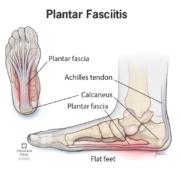
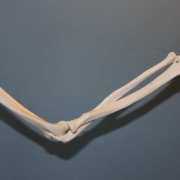
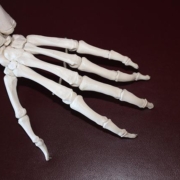

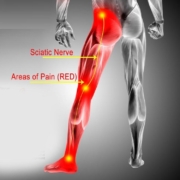
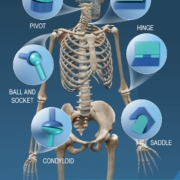


Leave a Reply
Want to join the discussion?Feel free to contribute!